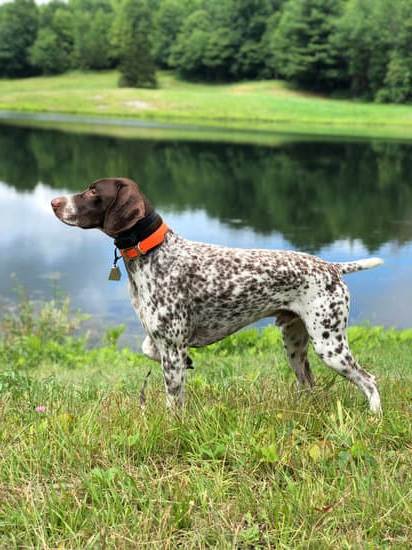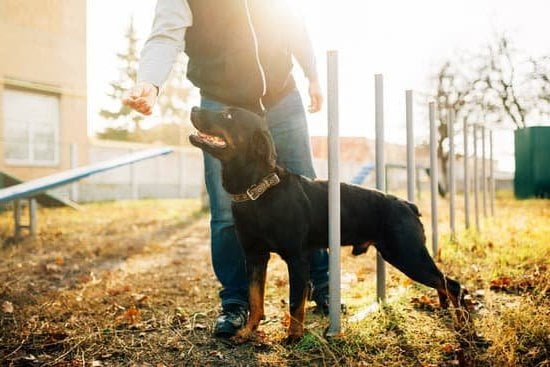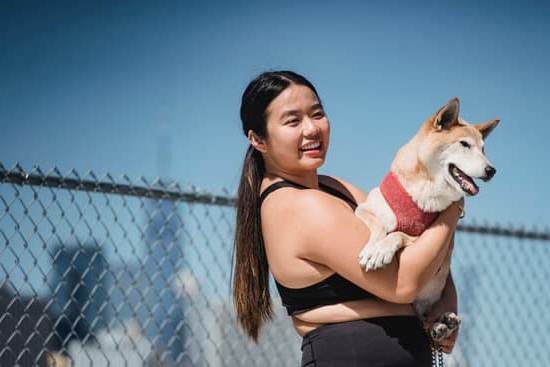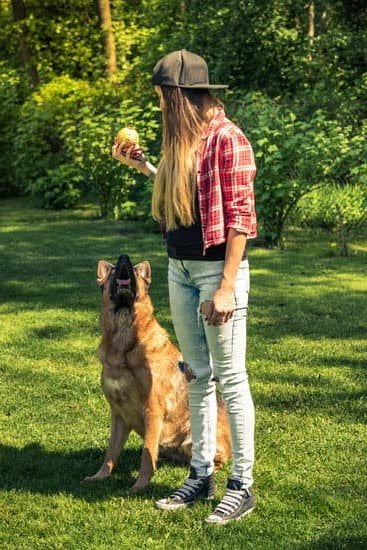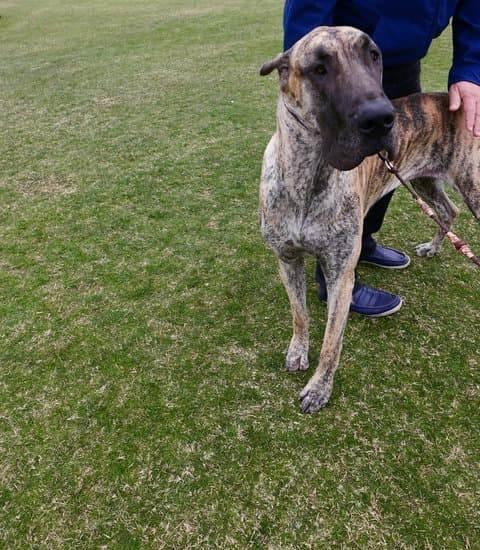Are you looking to enhance your dog training sessions? Look no further than a dog training treat pouch. This article will explore the importance of using a designated pouch for treats during training sessions and provide tips on how to choose the right pouch for your specific needs and preferences, as well as offer practical advice on using a treat pouch effectively.
Using a dog training treat pouch is essential for any pet owner or trainer looking to optimize their dog’s learning and obedience. The convenience and accessibility of having treats readily available during training sessions can make all the difference in the effectiveness of your efforts. In this article, we will delve into the benefits of using a dog training treat pouch, exploring its advantages and impact on the overall training experience.
When it comes to selecting the right dog training treat pouch, there are various factors to consider. From material and design to size and functionality, choosing the best pouch for your specific needs can significantly enhance the efficiency of your training sessions. We will provide valuable tips on how to select the most suitable pouch for you and your furry companion, ensuring a seamless and enjoyable experience during training.
Benefits of Using a Dog Training Treat Pouch
Using a designated dog training treat pouch during training sessions offers numerous advantages that can significantly improve the effectiveness of your training efforts. Here are some key benefits of using a dog training treat pouch:
- Convenience: A dedicated treat pouch allows you to have easy and quick access to your dog’s treats without having to fumble through pockets or bags. This convenience is especially important during training, as it allows for immediate reinforcement of desired behaviors.
- Hands-Free Training: With a treat pouch attached to your waist or belt, you can have both hands free to give cues, gestures, or use clickers during training exercises. This hands-free approach promotes better communication with your dog and makes the training process smoother and more efficient.
- Efficient Treat Management: A designated pouch helps you manage treats more efficiently, preventing them from getting lost or crushed in your pockets. It also provides a specific place for storing different types of treats, making it easier to cater to your dog’s preferences and dietary needs during training sessions.
In addition to these benefits, using a dog training treat pouch can also enhance the bond between you and your dog by creating a positive association between the pouch and rewards. By consistently using the same pouch for treats, your dog will learn to associate it with positive experiences, making them more eager and motivated during training sessions.
Overall, incorporating a treat pouch into your training routine can greatly improve the quality and effectiveness of your interactions with your canine companion.
How to Choose the Right Dog Training Treat Pouch
When it comes to choosing the right dog training treat pouch, there are several factors to consider in order to select the best one for your specific needs and preferences. The first thing to consider is the size of the pouch. Depending on the size of your dog and the amount of treats you plan to carry, you’ll want a pouch that can comfortably hold an adequate number of treats without being too bulky or cumbersome.
Another important aspect to consider is the design and functionality of the pouch. Some pouches come with multiple compartments or pockets, which can be useful for storing other essentials such as poop bags, keys, or even a phone. Additionally, look for a pouch that is easy to open and close with one hand, as you’ll often need your other hand free during training sessions.
The material and durability of the pouch are also crucial factors to keep in mind. You’ll want a pouch that is made from a material that is easy to clean and maintain, as it will likely get dirty from handling treats and being exposed to outdoor elements during walks or training sessions. Consider opting for a waterproof or water-resistant material for added durability.
Finally, take into account personal preferences such as color, style, and wearing options. Some pouches come with adjustable straps that can be worn around the waist or over the shoulder, while others may have clip-on options for attaching to a belt loop or leash. Ultimately, choosing the right dog training treat pouch comes down to finding one that fits seamlessly into your training routine and enhances the overall experience for both you and your furry companion.
| Factors | Considerations |
|---|---|
| Size | Ensure it can hold enough treats without being bulky |
| Design & Functionality | Look for multiple compartments, ease of use with one hand |
| Material & Durability | Choose easy-to-clean and waterproof material for added durability |
| Personal Preferences |
Tips for Using a Dog Training Treat Pouch Effectively
Using a dog training treat pouch effectively is essential for successful training sessions with your canine companion. Here are some practical tips on how to optimize the use of a treat pouch during your training sessions:
- Choose the Right Pouch: Select a treat pouch that is easy to access, has multiple compartments for different types of treats, and is comfortable to wear.
- Keep it Handy: Make sure to position the treat pouch in a convenient spot where you can easily access the treats without interrupting the flow of training.
- Practice Good Timing: Use the treat pouch to reward your dog immediately after they exhibit the desired behavior. This helps reinforce positive behaviors effectively.
In addition to these tips, it’s important to consider the type of treats you use with your dog training treat pouch. Opt for small, bite-sized treats that are easy for your dog to eat quickly so that training can continue smoothly. Training sessions should be fun and engaging for both you and your dog, and using a treat pouch effectively can make a significant difference in achieving successful outcomes.
Lastly, always remember to clean your treat pouch regularly to maintain its hygiene and durability. A dirty or smelly pouch can be unappealing and distracting during training sessions. By following these practical tips, you can ensure that your dog training treat pouch enhances the overall training experience for both you and your furry friend.
DIY Dog Training Treat Pouch
Making your own dog training treat pouch is not only a fun DIY project, but it also allows you to customize the pouch to fit your specific needs and preferences. Whether you prefer a certain color, size, or material, creating your own treat pouch can give you a personalized tool for your training sessions with your furry friend.
To start making your DIY dog training treat pouch, you will need some basic materials such as fabric, a zipper or Velcro closure, and a clip or belt loop for easy attachment. You can choose a durable and easy-to-clean fabric that will withstand outdoor training activities. It’s also a good idea to select a waterproof or water-resistant material to protect the treats from moisture and spills.
Once you have gathered all the necessary materials, you can begin by cutting the fabric into the desired size and shape for your pouch. Be sure to leave extra space for seams and closures. Sewing the zipper or attaching the Velcro closure is an important step in ensuring that the treats stay secure during training sessions. Adding a clip or belt loop will allow you to easily attach the pouch to your clothing or training gear.
Using a dog training treat pouch during training sessions is essential for keeping the treats easily accessible while keeping your hands free for other tasks. Creating your own custom pouch at home not only allows you to save money but also gives you the satisfaction of crafting a practical and useful tool for your dog training needs.
So go ahead and get creative with your design, and enjoy the benefits of having a personalized treat pouch for bonding with your four-legged companion.
| Materials | Steps |
|---|---|
| Fabric | Cut fabric into desired size |
| Zipper/Velcro | Sew zipper or attach Velcro closure |
| Clip/Belt loop | Add clip or belt loop for attachment |
Best Practices for Keeping Your Dog Training Treat Pouch Clean
Keeping your dog training treat pouch clean is essential for maintaining its durability and ensuring the hygiene of the treats you use during training sessions. Here are some best practices to keep your treat pouch in top condition.
Use Wipeable and Washable Materials
When choosing a treat pouch, opt for one made with wipeable and washable materials. This will make it easier to clean and maintain over time. Look for pouches with removable linings or machine-washable fabric to ensure thorough cleaning.
Regular Cleaning Routine
Establish a regular cleaning routine for your dog training treat pouch. After each training session, empty out any leftover treats or crumbs and wipe down the interior of the pouch with a damp cloth. Make sure to thoroughly dry it before using it again to prevent mold or bacteria growth.
Store Treats Properly
To maintain the hygiene of your pouch, store treats in sealed containers before placing them inside the pouch. This will prevent any moisture or oil from the treats from seeping into the fabric of the pouch, reducing the risk of stains and odors.
By following these best practices for keeping your dog training treat pouch clean, you can ensure that it remains durable and hygienic throughout your training sessions. Maintaining a clean treat pouch not only prolongs its lifespan but also contributes to a positive and effective training experience for both you and your furry companion.
Conclusion
In conclusion, using a dog training treat pouch can significantly enhance the effectiveness of your training sessions with your furry companion. By having easy access to treats and keeping them in a designated pouch, you can maintain your dog’s focus and motivation, making the learning process more efficient and enjoyable for both you and your pet. The convenience and functionality of a treat pouch provide numerous benefits that can ultimately contribute to the success of your training efforts.
Moreover, the use of a dog training treat pouch promotes positive reinforcement, which is crucial in establishing desired behaviors in dogs. With quick and readily available access to rewards, you can promptly reinforce good behavior, reinforcing the connection between the action and its consequence. This not only speeds up the learning process but also strengthens the bond between you and your dog.
Additionally, utilizing a treat pouch during training sessions helps in maintaining cleanliness and organization. Treats are kept secure and away from pockets or hands, preventing any mess or distractions during training.
Furthermore, by following best practices for keeping your dog training treat pouch clean, you can ensure its durability and hygiene for long-term use. Overall, incorporating a treat pouch into your dog training routine can make a significant difference in the overall training experience for both you and your canine companion.
Frequently Asked Questions
What Do You Put in a Dog Training Pouch?
A dog training pouch typically contains small, bite-sized treats that are easy to dispense during training sessions. It should also have compartments for storing other essentials like poop bags, clickers, and personal items.
How Do You Hold Dog Treats When Training?
When training a dog, it’s best to hold the treats in a way that allows for quick and easy access. This often means using a treat pouch or keeping them in a pocket that is easily reachable without fumbling or disrupting the training session.
How Do You Phase Out Treats When Dog Training?
To phase out treats when dog training, start by gradually reducing the frequency of treat rewards and replacing them with verbal praise or physical affection. It’s important to do this gradually to ensure that the dog continues to respond positively to training cues.

Welcome to the blog! I am a professional dog trainer and have been working with dogs for many years. In this blog, I will be discussing various topics related to dog training, including tips, tricks, and advice. I hope you find this information helpful and informative. Thanks for reading!

